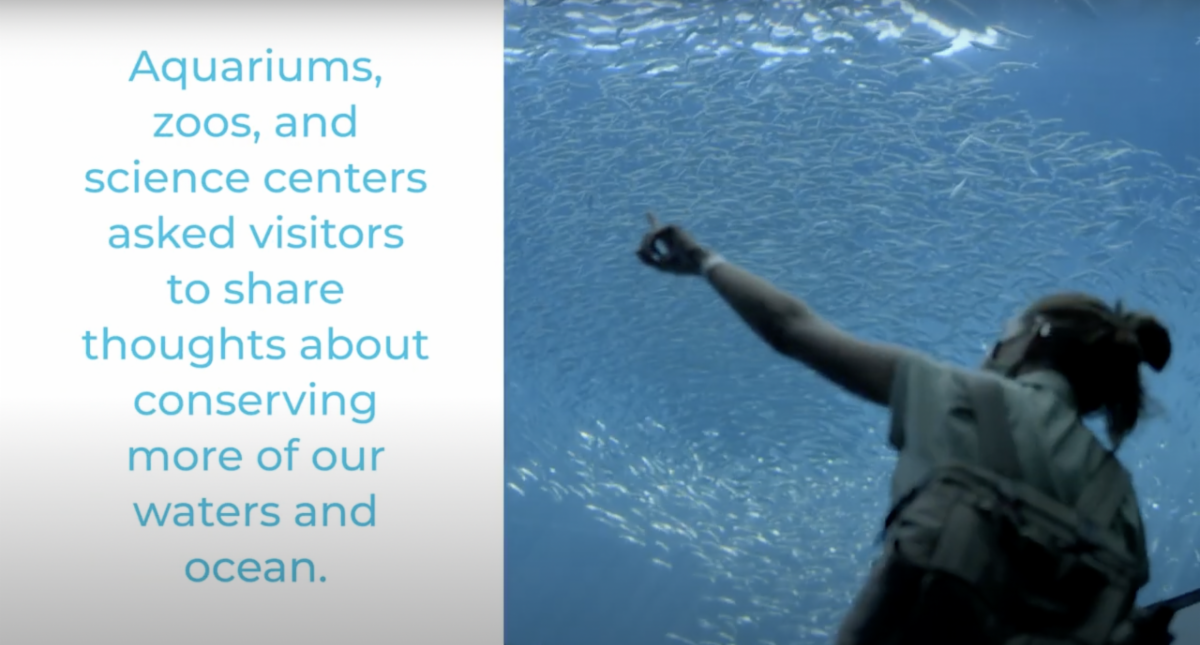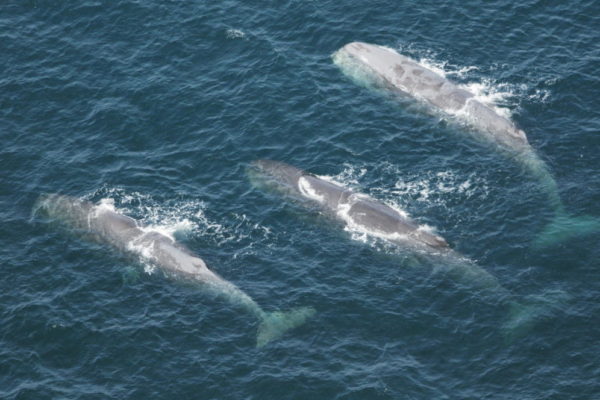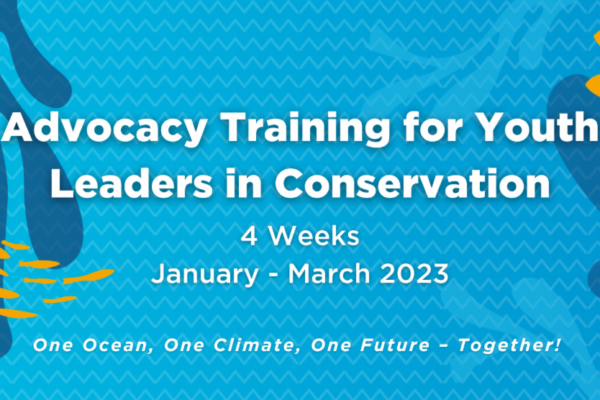Three members of the zoo, aquarium and museum working group on 30×30 were recently joined by two other sites in piloting a promising new approach to documenting public interest in advancing conservation efforts. The participating members included the Phillip and Patricia Frost Museum of Science, Philadelphia Zoo, and Seattle Aquarium, joined by Mystic Aquarium and Virginia Aquarium & Marine Science Center.
The approach centered on the idea of informing visitors of the new national conservation goal of 30×30, conserving by 2030 at least 30 percent of the lands and waters of “America the Beautiful,” and then asking visitors to share their thoughts by recording a short video message.
The short and long national video compilations of comments from visitors to the five sites were shared with national ocean leaders on World Ocean Day!
To help visitors connect with the concept of 30×30, the sites added their own twist, or a little local context. Frost Science, for example, prompted visitors with the possibilities for protecting more of Florida’s Coral Reef, while Seattle Aquarium engaged members after the screening a film about the importance of local kelp forests. Meanwhile, Virginia Aquarium asked visitors to think of their favorite ocean animal, Philadelphia Zoo about their favorite place in nature, and Mystic Aquarium more generally about conserving more of our ocean.
Visitors were very open to participating! Many of the sites made the ask on Earth Day and effectively leveraged that attention to things environmental. Dani Hogan of the Philadelphia Zoo reported that dangling a little extra incentive, such as the opportunity to receive a zoo key, often helped attract some initial interest. Yet even then, the sites cautioned that speaking on camera will not be appealing to all visitors. Leslie Clements of the Virginia Aquarium noted that even among those who were intrigued enough to make eye contact with the staff member at the camera, it was “halfsies,” with approximately half of those visitors willing to follow through and do a recording. But once someone in a group participated, that could inspire others, with Kelly Matis of Mystic Aquarium commenting that, “once one member of the group did it, everyone wanted to.”
As the final step in the process sites then selected a representative mix of video messages that professional editor, Jo Knight, turned into a set of site-specific compilations, as well as a national compilations, that in turn could be shared with local and national leaders respectively. The Ocean Project’s Executive Director, Bill Mott, for example, shared the video widely on World Ocean Day, including with those gathered for Capitol Hill Ocean Week, receiving a lot of positive feedback from NGO and agency leaders alike!
During a debrief about their experience with the project, the sites emphasized that this approach is one that they would recommend to other zoos, aquariums, and museums!
“This was an incredible opportunity to engage our members in our mission,” said Dr. Erin Meyer of the Seattle Aquarium. Others cited the importance of coordination, with appreciation for the clarity around what they would need to do, and what would be provided, as well as the opportunity to come together as a group to ensure that what they would be gathering locally would also fit together nationally. The group also praised the way that in addition to coordinating the effort, The Ocean Project covered the cost of a professional editor. “The balance of being able to do our thing and contribute to a national effort worked really well, and then having an editor, that made it possible for us to participate…that was something we could not have done internally,” added Elizabeth Ricardo Binding from Frost Science.
The group then offered a set of suggestions for others who would like to apply this approach:
- Work with the willing, ensuring that visitors do not feel any pressure to participate
- Prompt visitors to think about their favorite animal or their favorite place in nature, as that often led to the best responses
- Provide visitors with a “practice run,” as that helped them loosen up and speak freely
- Take care to ensure a nice background, and quality audio and video
- Allow for adequate staffing, and avoid the “curse of the capable,” as even if one person can do it all, it was much better when three were involved, with one to recruit and prepare participants, and ensure waivers were signed; another to operate the camera; and a third to do the interview…
- Involve multiple departments, as this can be a great way to connect education and marketing, guest engagement and government relations staff too
- Allot adequate time, noting two half-days of recording seemed to be the right balance for gathering enough interviews while maintaining staff enthusiasm
Seattle Aquarium offered an additional suggestion, as they tried, and liked, doing the activity as part of a special event for members. “Our marketing and communications team was really excited about this opportunity and brought in our events, visitor engagement and volunteer teams–and we had great response from our members,” explained Dr. Meyer. “It affirmed that we should do more member events like this in the future.”
Please take a moment to review the videos and let us know if you have a favorite! And, of course, if you and your organization would like to participate in the effort to advance conservation in keeping with the goal of 30×30, send us an email 30×30@theoceanproject.org, join the 30×30 community on the AZA Network, or visit us during our session, “Collaborating for Conservation – Successes, Lessons and Opportunities with 30×30,” on September 1, 2022 at the upcoming annual conference of AZA.




